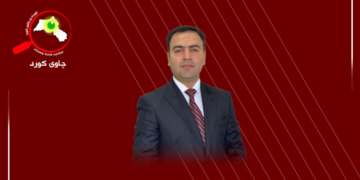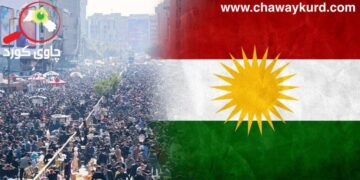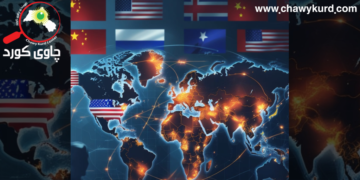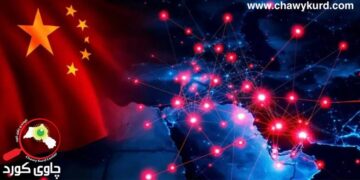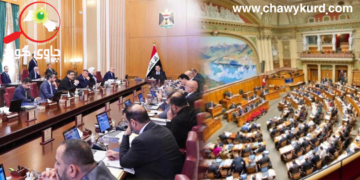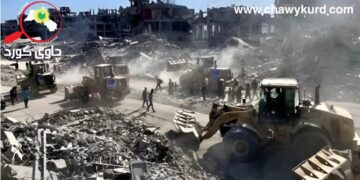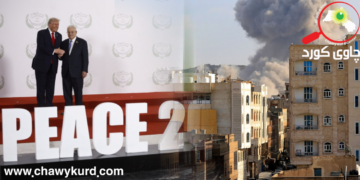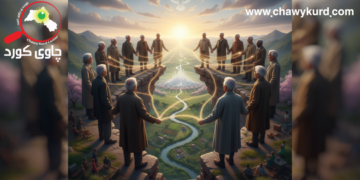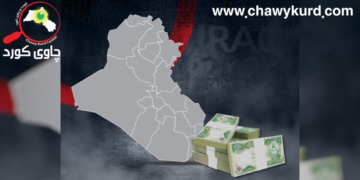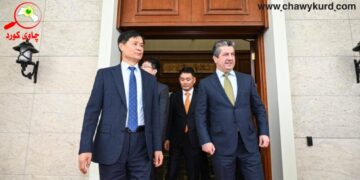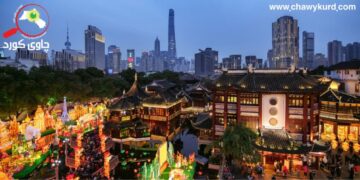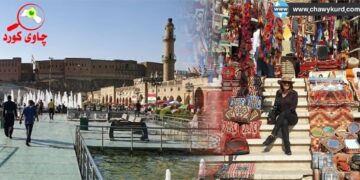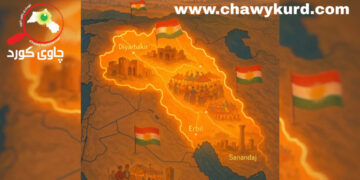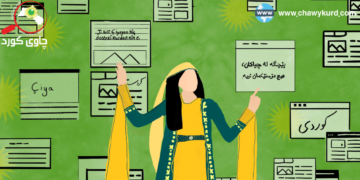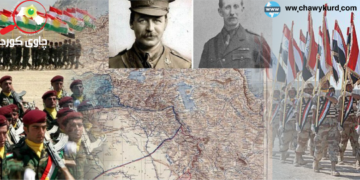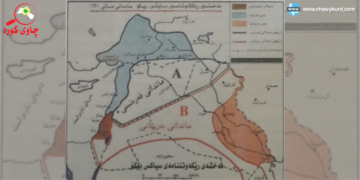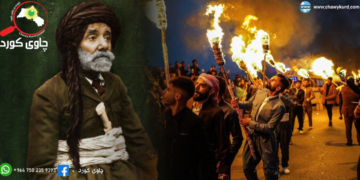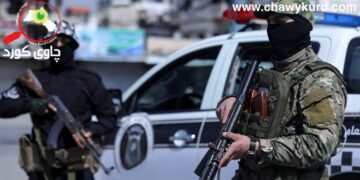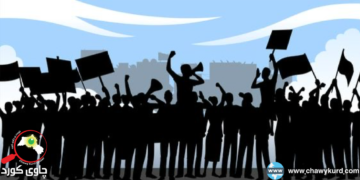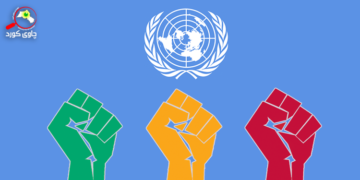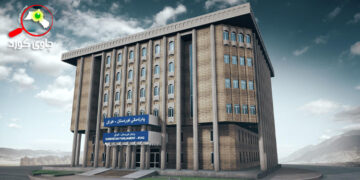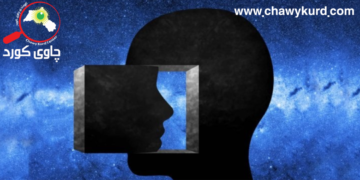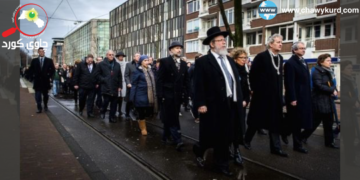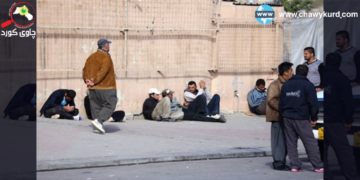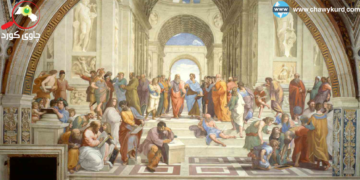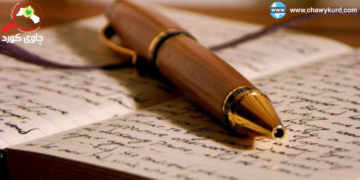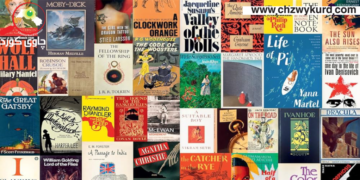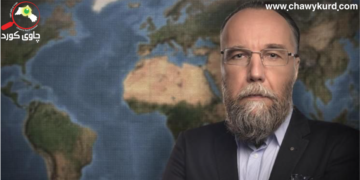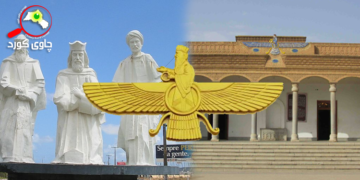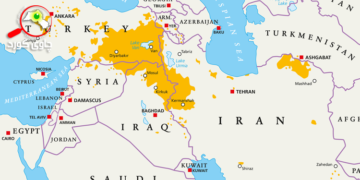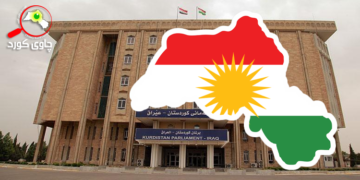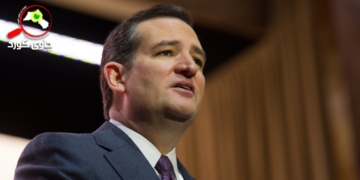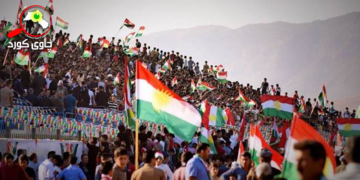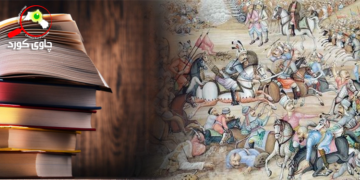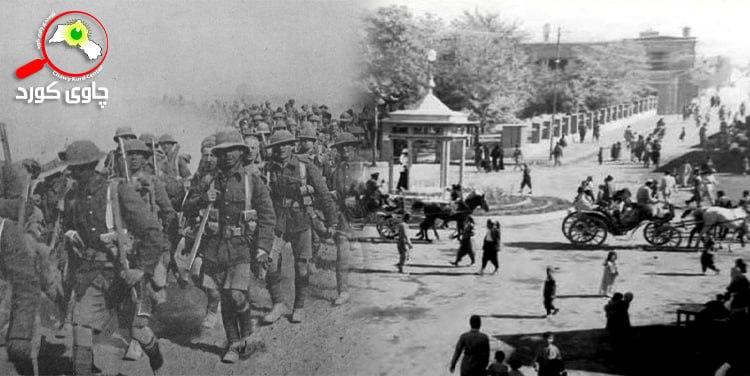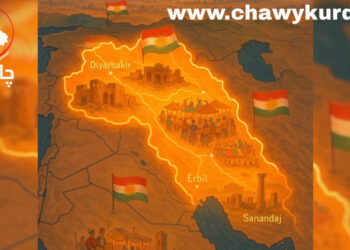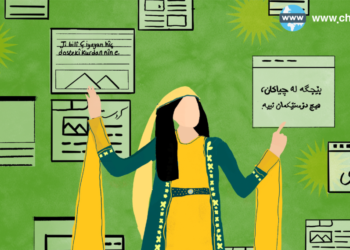Great Britain’s decision in February 1929 to renounce its mandate on Iraq and let the country gain its independence by negotiating a new treaty where no mention was made regarding Kurdish autonomy provoked the largest urban mobilizations in Iraqi Kurdistan during the Mandate. Political agitation culminated in the Sulaimaniya riots on 6 September 1930, when the Iraqi army fired on the crowd in unclear circumstances, causing the death of 14 people.
These riots are an important page of Iraq’s local and national history under the Mandate. Firstly, the shooting occupies a central place in the collective memory of the Sulaimaniya population. Secondly, the urban character of the unrest made it an exception given the context of Kurdish mobilizations, which were mainly rural during the Mandate. Finally, the major consequence of the massacre was the return in force of Sheikh Mahmud – considered by the British in 1918 the most influential Kurdish personality in Southern Kurdistan during and after the First World War, due to his position as the head of the Qadiri Sufi Order (Barzinji branch) and his status and wealth as a landed aristocrat1 – to the Kurdish political scene in 1930.
Of the three above-mentioned aspects – collective memory, radicalization and the uprising under Sheikh Mahmud – this essay will focus on the radicalization of different political and social actors in Sulaimaniya. First of all, we shall provide the historical context for the creation of local elites in this Kurdish town, and the causes for the emergence of competing political blocs in 1924. Then, we shall analyze the dynamics of political radicalization in Sulaimaniya and particularly the riots of 6 September 1930. Finally, this article will explain why, despite the radicalization of the Kurdish urban political scene in the 1920s, after 1930 and until the Second World War rural areas became the centres of Kurdish mobilization.
Sulaimaniya’s exceptional place in Kurdish politics during the Mandate can be explained by its particular evolution after the collapse of Ottoman authority in the region. In November 1918, Major Edward Noel, a British Political Officer with some experience in the Middle East, was sent on a mission to Sulaimaniya to restore order with the local chiefs in the areas outside the limits of jurisdiction of the British military authorities. Sheikh Mahmud (1882–1956) was appointed Governor of Middle Eastern Studies, ‘Southern Kurdistan’, the term defining the area between the Great Zab and the Diyala rivers. For each of the minor sub-divisions, Kurdish officials were appointed to work under the guidance of the British Political Officers.
Southern Kurdistan was then, with its ‘capital’ Sulaimaniya, an entity created and delimited by the British, thus becoming a ‘laboratory’ for political and social engineering in the hands of colonial administrators.2 However, there were other factors which reinforced its singularity. First of all, the town of Sulaimaniya stood apart from other urban centres of Northern Iraq because of its ethnic and religious homogeneity. Almost the entire population of the district was composed of Sunni Kurds, unlike Arbil and Kirkuk, where Turkmen, Arabs and Kurds alone did not constitute a clear majority.
The other major singularity of Sulaimaniya was its historic heritage. ‘Southern Kurdistan’ partially overlapped with the ancient Baban Emirate founded in the middle of the seventeenth century by Baba Suleiman (1663–75). Sulaimaniya was built by Ibrahim Pasha (1783–1803) at the end of the eighteenth century as the new capital of the Emirate. At its greatest extent, the Baban Emirate included Koi Sanjaq and Bana in the north, and Kifri and Qara Tapa in the south. Trapped between the Turco-Persian rivalry, the Kurdish emirs of Baban tried to maintain their independent status. But in 1847 Ahmad Pasha, the last Baban ruler, was defeated by Nejib Pasha, the Ottoman governor of Baghdad, and Baban autonomy came to an end. The destruction of the last Kurdish emirate was part of the process of administrative centralization initiated by the Ottoman authorities in 1839 under the aegis of the Tanzıˆmat (Reorganization) programme which aimed to modernize the structures of the Empire.
Despite the loss of autonomy, Sulaimaniya as an Ottoman provincial capital reached an important level of development. Before the First World War, the city with more than 10,000 souls, had land record offices, primary and secondary schools, more than 30 mosques, Turkish baths, an agricultural bank, fine houses and many rich merchants.4 It is not surprising that when the British reached Sulaimaniya in 1918, several descendants of the former Baban rulers still lived in the city, notably Jamal Beg, 5 Azmi Beg and Faiq Beg, all of whom later became involved with the Kurdish nationalist party.
Other members of the family6 resided in Baghdad (Hamdi Beg) and Istanbul (Hussein Chukri, Mustafa Zihni Pasha).7 At the turn of the twentieth century, the merchants and Sulaimani notables were subjected first to the authority of Sheikh Said, the father of Sheikh Mahmud, and then to Sheikh Mahmud himself, both enjoying the backing of the Ottoman Sultan.8 When Noel arrived in Sulaimaniya, he relied on the ‘natural leaders’ or local intermediaries, mostly sheikhs and aghas, in order to create an indigenous administration. According to the instructions given by Colonel Arnold Wilson, the Acting Commissioner for Mesopotamia, to Major Noel: ‘It should be explained to the tribal chiefs with whom you enter into contact that there is no intention of imposing upon them an administration foreign to their habits and desires. Tribal leaders will be encouraged to form a confederation to settle their public affairs under the guidance of the British Political Officers.’9
The result of this ‘indigenist’ policy which was carried forward in the following years was the re-tribalization of Kurdish society, and of Iraqi society in general.10 For many British officials, the tribal chief was the person who could effectively serve 538 J. T. Gorgas as the point of contact between the state and the wider rural population.11 The choice of Sheikh Mahmud and his collaborators as the ‘natural leaders’ of Iraqi Kurdistan, following the colonial model applied in India,12 was also due to the pressures of the moment. In fact, between 1919 and 1920, the British had planned to rely on eminent urban notables, particularly the old Baban aristocracy as exemplified by Hamdi Beg Baban.13 Nevertheless, Turkish military pressure and its growing influence among Kurdish tribes in the north of Iraq led the British to rely on Sheikh Mahmud. He was considered the only person able to mobilize a large contingent of armed men among the tribes in order to oppose the advance of the Turkish army in the Mosul province.
Since 1918 anti-British rebellions had broken out in the mountainous regions of Rowanduz, Aqra and Barzan among the local tribes anxious to gain their independence. Moreover, and despite the November 1918 armistice which sanctioned the end of the war in the Middle East, the leaders of the Turkish ‘war for independence’, led by Mustafa Kemal, rallied a good number of Kurdish chiefs to the battle against the English ‘infidels’ using intense Pan-Islamic propaganda. The objective of this propaganda was to keep alive sources of rebellion hoping to regain the ancient Ottoman vilayet of Mosul, considered a territory historically linked to Anatolia.14 At the end of 1918, Sulaimaniya was in a situation which differed widely from the former grandeur of the old capital of the Baban Emirate. According to different British reports, Ottoman troops left Sulaimaniya in ruins, and 80 per cent of the population had left the city during the war.15 In such a context, it seems difficult to imagine the presence of a significant stratum of notables which could be relied upon to install a solid civil administration. The creation of the autonomous ‘Kurdish government’ around Sulaimaniya in 1918, pending the decision of the League of Nations regarding the future asset of Kurdistan, was seen by the British authorities as a measure going towards the aspirations of its population. Paradoxically, and despite the British policy of retribalization of Kurdistan, the new political role acquired by Sheikh Mahmud between 1918 and 1919 as the ‘Kurdish representative’ favoured the formation of a new urban elite which gradually sought to affirm its local power, and finally, to free itself from the influence of sheikhs and aghas.
Indeed, since 1918 Kurdish nationalism had become the new source of Sheikh Mahmud’s legitimacy. He surrounded himself with the local effendiyya16 clan which included civil servants, teachers, journalists and ex-officers of the Ottoman army.17 The first government of Sheikh Mahmud equipped itself with a Kurdish ‘national’ flag18 and, although British reports insist on the importance of tribal elements, the representatives of this clan played an unquestionable part in the autonomous Kurdish administration.19
The Acting Civil Commissioner decided in 1919 to finish with the first Mahmud’s government because the Kurdish chief was trying to extend his control over Kirkuk and Kifri, thus threatening to break the balance of power in the north of Iraq and take along with him the other Kurdish chiefs in a widespread rebellion against the British. Noel was replaced as Political Officer by E.B. Soane, a ‘cynical realist and disillusioned critic of the Shaykh’.20 Relations between the two men grew difficult and the crisis exploded in May 1919 when Sheikh Mahmud suddenly invoked a Urban Mobilization in Iraqi Kurdistan 539 group of supporters from across the Persian frontier, imprisoned the British officers, and proclaimed the independence of Kurdistan. Without any significant assistance from the Kurdish tribes, by June 1919 Sheikh Mahmud was captured and taken to Baghdad.
Sulaimaniya did not, however, experience the stability the British military authorities had hoped for. Fearing the advance towards the town of rebellious Kurdish tribes and of Turkish ‘irregulars’, the British evacuated the town in a rush on 1 September 1922. The High Commissioner then had Sheikh Mahmud return and appointed him hukumdar or governor of Kurdistan on 10 October 1922. A few days after his return, Sheikh Mahmud announced by decree that a cabinet be formed of eight ‘ministers’ recruited from both the tribal aristocracy and effendiyya. Sheikh Mahmud became Defence Minister, while his brother, Sheikh Qadir, was appointed Prime Minister, and his brother-in-law, Sheikh Muhammad Gharib, Interior Minister. Other portfolios were held by a Christian merchant, Qarim Alaqa (Finance), Public Works by Hama Agha Abdulrahman Agha, a wealthy merchant and landowner in Sulaimaniya; Justice by Sheikh Ali Qaladari; Sayyid Ahmad Barzinji, a landowner, became the Chief of Police, and a former general of the Ottoman army, Mustafa Pasha, was put in charge of Education. A month later, Sheikh Mahmud proclaimed himself the ‘King of Kurdistan’ and initiated the publication of the newspaper Roji Kurdistan (Kurdistan Sun) with the collaboration of Sulaimaniya’s leading intellectuals and poets.21 He encouraged nationalist symbolism: the reinstatement of the Kurdish flag, the printing of
‘Kurdish’ postal stamps, and the organisation of military parades which contributed to the diffusion of nationalism as the lingua franca of Sulaimaniya residents. In July 1922, a group of Sulaimaniya intellectuals and notables, guided by Mustafa Pasha (1866–1936), founded Jamiyeti Kurdistan (The Kurdistan Association) which resembled the cultural committees created by Kurdish intellectuals and nationalists in Istanbul during Ottoman rule.22 In August 1922, Mustafa Pasha published the first issue of Bangi Kurdistan (The Call of Kurdistan), the association’s official journal. In 1923, the British authorities decided to put an end to Sheikh Mahmud’s ambitions once again. He was suspected of maintaining contacts both with the Shia leaders of Najaf and Karbala, and the Kemalists who still claimed the Mosul province. Sulaimaniya was thus reoccupied in May 1923.
Furthermore, the British officials had sought since 1921 to implement a progressive devolution of administrative and political power to the Iraqi government. The end of Sheikh Mahmud’s ‘Kingdom’ left an open door to the gradual formation of competing political blocs. Captain C.J. Edmonds set up a new local administration with the assistance of those notables who were ready to collaborate with the mandatory powers. Sheikh Qadir, Sheikh Mahmud’s brother, who had always been favourable to an agreement with the British, was put in charge of public security, while Ahmad Tawfiq Beg, a local notable, was responsible for civil administration.
The new administration was supported by merchants who had been severely penalized in 1918–19 and 1922–23 by the punitive tax collection system set up by Sheikh Mahmud to finance the ‘clientilization’ of the tribes. In the eyes of merchants, the British administration represented a financial respite and a possibility to finally 540 J. T. Gorgas affirm their influence in local affairs, deriving strength from their economic power and commercial networks with rural areas and other towns in the region.23 This bloc was challenged by the partisans of Sheikh Mahmud, guided by Sayyid Ahmad Barzinji, the former Police Chief under Sheikh Mahmud’s ‘Kingdom’. This group was sometimes identified in British reports as ‘pro-Mahmud’ bloc, other times as ‘pro-Turkish’, as their opposition to the British Mandate was likely to seal a strategic alliance with the Ankara government.
Sheikh Mahmud was able to return to the town in July 1923 following the retreat of the British troops as a result of the military and financial pressure faced by the Mandate. The flight of some 2,000 refugees, mostly notables and merchants, more or less compromised with the British, marked the rise to power of the ‘pro-Mahmud’ bloc. The political situation, however, was no longer the same. The experience of an autonomous ‘Southern Kurdistan’ had been definitely buried. The cantons of Rania and Qala Diza in the north, Chamchamal in the west, Qara Dagh and Halabja in the south, were detached from the district of Sulaimaniya, so that when SheikhMahmud made his entry in July 1923, his authority was reduced to an extremely limited territory, wedged in between Persian borders and Kurdish regions newly subjected to the authority of the Iraqi government.
Sulaimaniya passed once again under direct British control in May 1924.24 In a few years, Sulaimaniya regained the aspect of a prosperous town. The population which had dropped to 700 in 1924 rose to 12,000 in two years, and to 20,00025 by 1928. The integration of Sulaimaniya into the Iraqi scheme was accomplished mostly through the skills of the British Political Officers, who played off tribal chiefs and notables against their rivals, such as Babakr Agha against Abbas Mahmud Agha, the two leaders of the Pizhdar tribe, and Sheikh Qadir against Sheikh Mahmud. British officers also gave their local allies official positions, as reflected in the appointment of Ahmad Tawfiq Beg as mutasarrif (governor). However, the cooptation of some ‘clients’ into the new British regime introduced increasing competition between elites. Once Pax Britannica was consolidated, the camp of Kurdish nationalists, who were to be responsible for the riots of 6 September 1930, gathered around Zanistıˆ-i-Kurdistan (Learned Society of Kurdistan), founded in spring 1926 with the goal ‘to improve the education of the Kurdish masses’.26 But, very quickly, certain members of the Society, with the vice-president Jamal Beg Baban among them, wanted to give it a more political orientation and place the Kurdish effendiyya at the very heart of the debates of the moment, such as administrative autonomy, economic development and the extension of education, to the detriment of the tribal chiefs.27 As David McDowall puts it, Zanistıˆ-i-Kurdistan became a ‘cockpit for local political rivalry in which Kurdish nationalist credentials were exploited’.28 Thus, Mustafa Pasha, the former ‘Minister’ of Education under Sheikh Mahmud’s government, used the association to assert his candidacy as the deputy for Sulaimaniya in the Iraqi parliament. This move was condemned by the mutasarrif of Sulaimaniya, Ahmad Tawfiq Beg, who was also the president of the Association, at the instigation of the British officers. The resignation of Mustafa Pasha in 1927 was accompanied by a campaign against Ahmad Tawfiq Beg in order to install Jamal Beg Baban in his place as mutasarrif. The British thought that Jamal Beg Baban would use family connection to fill the remaining administrative posts.29 Although Urban Mobilization in Iraqi Kurdistan 541 this plot failed, it is clear that the individual and ‘dynastic’ ambitions of some Kurdish notables, like the Baban, were closely intertwined with the nationalist aspirations.
From 1929 the political blocs which developed around Zanistıˆ-i-Kurdistan entered into open conflict due to three factors: the clauses of the Anglo-Iraqi Treaty, electoral politics and the disruption of the balance of power between the notables of Sulaimaniya following the ousting of the new mutasarrif, Tawfiq Wahbi (1891–1984),30 from the district in 1930. The complete absence of any reference to Kurdish autonomy in the draft of the Anglo-Iraqi Treaty presented in 1929 caused strong reactions in Kurdish nationalist circles. Between 1929 and 1930 several memos and petitions were submitted by various Kurdish personalities and committees to the British authorities and the League of Nations. As a result of these actions, the government promised a policy centred around a Local Language Law at the beginning of April 1930. However, in spite of the constant pressure by British advisers on the Iraqi cabinet, this law had still to be drafted by May 1931, and ‘when it eventually appeared was so emasculated as to be almost unrecognizable’.31 The Iraqi government’s lack of sensitivity vis-a` -vis the requests by Kurdish circles caused an alliance between moderate sectors, represented by Sheikh Qadir and the collaborators with the British officials, and the ‘radicals’, headed by the representatives of the effendiyya including merchants and Iraqi army officers.
Furthermore, according to British reports, the effendi nationalists were much more influential than Sheikh Qadir, who did not enjoy the same legitimacy as his brother, Sheikh Mahmud.32 Aside from the pro-Kurdish bloc, there was a competing ‘pro-Baghdad’ bloc, which had become important since the ‘pro-Turkish’ bloc had lost its appeal after the decision of the League of Nations to annex the former Mosul vilayet to Iraq in 1925. The ‘pro-Baghdad’ bloc favoured the integration of Sulaimaniya into the Iraqi state, while hoping to benefit from it, especially regarding road construction aiming to support trade with Mosul and Baghdad.33 The members of the ‘pro-Baghdad’ party did not adhere to Arab nationalism but were a fairly heterogeneous crowd. Some of its leaders, such as Mustafa Pasha, were Kurdish nationalists disappointed by the adventures of Sheikh Mahmud and willing to open new avenues of personal influence. Other members included former partisans of the ‘pro-Turkish’ or ‘pro- Mahmud’ bloc who were driven, above all, by anti-British sentiment.
The gap between those who supported Kurdish autonomy and those who favoured union with Baghdad deepened further during the initial phase of the forthcoming elections. After the main terms of the Anglo-Iraqi Treaty were published on 1 July 1930, a group of 11 notables constituted themselves into a committee of leaders directing the political agitation in Sulaimaniya and succeeded in boycotting the election of the Inspection Committee for the district in charge to prepare the new legislative elections.34
At the same time, prominent local notables addressed a certain number of petitions to Geneva in the summer of 1930, demanding formation of a Kurdish government under the supervision of the League of Nations. The despatch of petitions from then on was accompanied by a new ‘repertoire of collective actions’,35 thus preparing the passage from ‘patriotic 542 J. T. Gorgas agitation’ guided by a small circle of intellectuals united around Jamiyeti Kurdistan, and then Zanistıˆ-i-Kurdistan, towards the consolidation of nationalist ‘mass politics’.





